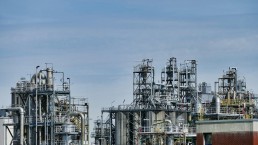In the oil and gas industry, downtime can lead to significant financial losses, delays, and safety concerns. A report by Aberdeen Group estimates that unplanned downtime in the oil and gas sector can cost operators an average of $260,000 per hour, with many incidents preventable through better planning and resource allocation. One of the most promising ways to combat downtime is the implementation of advanced tracking technologies, particularly real-time personnel and asset tracking systems.
The Importance of Minimizing Downtime
Downtime in oil and gas operations occurs when critical equipment fails, workers are misallocated, or logistical bottlenecks arise. These stoppages can result in millions of dollars in lost revenue, and increased operational risks, not to mention disruptions in supply chains and production schedules. Reducing downtime is essential not only for operational efficiency but also for maintaining worker safety and adhering to environmental regulations.
Real-Time Personnel Tracking: Enhancing Workforce Utilization
One of the key contributors to operational delays is the inefficient use of personnel. Workers can become hard to locate in large, complex environments like offshore rigs, refineries, or drilling sites. Real-time personnel tracking systems use wearable devices such as smart badges, RFID tags, or GPS-enabled wearables to pinpoint the exact location of every worker at any given time.
Such technologies help supervisors assign the right people to the right tasks and ensure that workers are not stranded in dangerous areas during critical operations. Additionally, geofencing features allow managers to create virtual boundaries, instantly notifying them when workers leave or enter hazardous zones. A study from McKinsey & Company found that improved workforce management through tracking solutions could increase productivity by up to 20% in industrial settings, including oil and gas operations.
Asset Tracking: Maximizing Equipment Efficiency
The oil and gas industry is heavily reliant on specialized equipment, which is often spread across large distances and harsh environments. The failure or misplacement of critical machinery can halt entire operations. Real-time asset tracking systems can monitor the status and location of equipment, from drilling rigs to vehicles, ensuring they are available when needed.
By using IoT sensors and RTLS technology, these systems provide real-time data on equipment conditions, performance, and location. Predictive maintenance, powered by tracking data, enables operators to fix equipment before failures occur, significantly reducing unplanned downtime. According to a report from Deloitte, predictive maintenance can decrease maintenance costs by up to 30% and reduce breakdowns by 70%.
Geofencing and Mustering: Ensuring Swift Responses in Emergencies
In high-risk environments such as oil and gas operations, quick responses to emergencies are critical. Tracking solutions with geofencing and mustering features offer immediate benefits in terms of safety and efficiency. Geofencing allows managers to set up virtual perimeters around critical or dangerous areas, ensuring workers are alerted when they enter restricted zones. This minimizes the risk of accidents and equipment damage.
Mustering systems, which track the real-time location of personnel during emergencies, ensure that workers are evacuated quickly and accounted for. This feature is particularly useful in large sites where communication can be delayed. In case of an emergency, operators can instantly see who is in danger and who has safely exited the area, streamlining evacuation procedures and reducing downtime related to safety incidents.
Integrated Systems: A Turnkey Solution for Oil and Gas
The integration of personnel and asset tracking into a unified system offers a comprehensive approach to minimizing downtime. Solutions that combine real-time tracking with other operational data, such as equipment health or environmental conditions, allow for seamless communication between teams, faster decision-making, and optimized resource allocation.
By investing in an integrated, turnkey tracking solution, oil and gas operators can gain full visibility over their operations, reducing both planned and unplanned downtime. A report by ARC Advisory Group suggests that companies that adopt advanced tracking technologies could see a 5-10% improvement in overall equipment effectiveness (OEE), further proving the value of these systems.
Tracking Technologies as a Key to Operational Efficiency
In an industry where even a few hours of downtime can have devastating financial and safety consequences, advanced tracking technologies provide a solution that enhances both efficiency and safety. By implementing real-time personnel and asset tracking, along with geofencing and mustering capabilities, oil and gas operators can dramatically reduce downtime, optimize workforce allocation, and ensure the smooth running of operations in even the most challenging environments.
Investing in these advanced tracking solutions isn’t just a strategy for improving efficiency—it’s a proactive approach to risk management that ensures oil and gas companies stay competitive in a demanding global market.
Ready to revolutionize your workforce safety? Discover how Tracklynk’s advanced RTLS solutions can transform your oil and gas operations.


